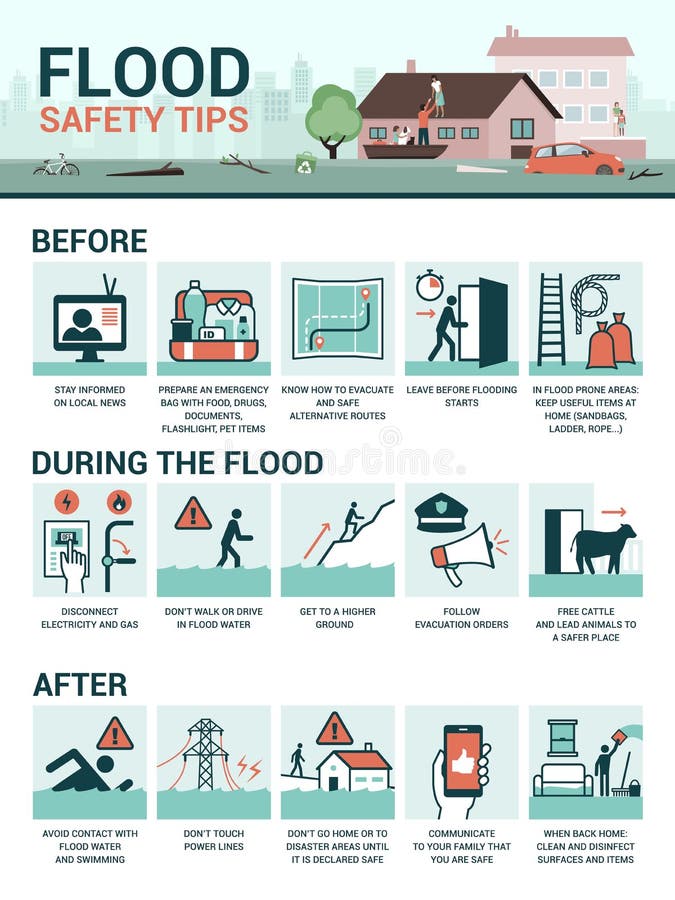Flash Flood Emergency Preparedness: Protecting Yourself And Your Family

Table of Contents
Understanding Flash Flood Risks and Warning Signs
Before you can effectively prepare for a flash flood, you must understand the risks you face. Knowing your vulnerability is the first step towards effective flash flood emergency preparedness.
Identifying High-Risk Areas
Flash floods are most common in areas with specific geographical characteristics. Identifying your risk level is crucial for proactive planning.
- Check FEMA Flood Maps: The Federal Emergency Management Agency (FEMA) provides detailed flood maps that pinpoint high-risk areas. Use these resources to assess your property's vulnerability.
- Look for Past Flood History: Research your area's history. Has your neighborhood experienced flash flooding before? This historical data offers valuable insight into potential risks.
- Identify Areas with Poor Drainage: Poor drainage systems increase the risk of flash flooding. Observe your surroundings; are there areas prone to water accumulation after heavy rainfall?
Recognizing Flash Flood Warning Signs
Recognizing the warning signs of an impending flash flood is crucial. Swift action can be the difference between safety and peril.
- Listen to Weather Alerts: Pay close attention to weather reports and alerts issued by the National Weather Service (NWS). Flash flood watches and warnings indicate increasing risks.
- Understand the Meaning of Flash Flood Watches and Warnings: A watch means conditions are favorable for a flash flood; a warning means a flash flood is imminent or occurring. Act decisively upon receiving a warning.
- Be Aware of Heavy Rainfall in Your Area: Intense rainfall over a short period is a major flash flood trigger. Monitor rainfall accumulation closely, especially in areas with steep slopes or limited drainage.
Building a Flash Flood Awareness Plan
Staying informed is a key component of flash flood emergency preparedness. Develop a robust system for receiving timely warnings.
- Sign up for Emergency Alerts: Register for emergency alert systems provided by your local government or through mobile apps like FEMA's.
- Download Weather Apps: Utilize weather apps on your smartphone to receive real-time weather updates, including flash flood warnings.
- Have Multiple Ways to Receive Warnings: Don't rely solely on one source. Combine smartphone alerts with traditional media like radio or television for redundancy.
Creating a Family Flash Flood Emergency Plan
A well-defined family plan is paramount to ensuring everyone's safety during a flash flood. Preparation is key to effective flash flood emergency preparedness.
Establishing Communication Protocols
Effective communication is essential during and after a flash flood. Establish a clear plan to contact family members.
- Designate a Meeting Point: Choose a safe, easily accessible location for your family to meet if separated.
- Establish an Out-of-Area Contact Person: Select someone outside the affected area to serve as a central communication hub for family members.
- Use Text Messaging if Phone Lines are Down: Text messages often work even when phone lines are overwhelmed.
Developing an Evacuation Plan
Knowing how and when to evacuate is vital. Develop escape routes and identify safe locations.
- Plan Multiple Routes: Having alternate evacuation routes is crucial in case one becomes impassable.
- Identify Safe Shelters or Evacuation Centers: Locate nearby shelters or designated evacuation centers in advance.
- Pack an Emergency Kit in Advance: A pre-packed kit saves precious time during an emergency (detailed below). Consider the needs of individuals with disabilities.
Assembling a Flash Flood Emergency Kit
Your emergency kit should contain essential supplies for short-term survival.
- Water: Store at least one gallon of water per person per day for several days.
- Non-perishable Food: Pack easy-to-prepare, non-perishable food items.
- First-aid Kit: Include essential medical supplies and any necessary medications.
- Flashlight and Radio: Essential for communication and navigation in the dark.
- Medications: Pack a sufficient supply of any prescription medications.
- Important Documents (in Waterproof Bags): Include copies of insurance policies, identification, and other crucial documents.
Safety Measures During a Flash Flood
Knowing what to do during a flash flood is crucial. Your actions can significantly impact your safety and the safety of your loved ones.
Evacuation Procedures
Swift action is paramount. Evacuate immediately if instructed by authorities.
- Follow Official Evacuation Orders: Obey all instructions given by emergency officials.
- Never Attempt to Drive Through Flooded Areas: Even shallow water can sweep a vehicle away.
- Move to Higher Ground Immediately: Seek higher ground as quickly and safely as possible.
Staying Safe Indoors During a Flash Flood
If evacuation isn't possible, take precautions to protect yourself within your home.
- Move to the Highest Level of Your Home: Seek refuge on the upper floors or the highest point of your house.
- Stay Away from Windows: Avoid windows to prevent injury from flying debris or broken glass.
- Turn Off Utilities if Necessary: Shut off gas, electricity, and water if instructed to do so by authorities.
Protecting Your Property from Flash Flood Damage
Taking preventative measures can reduce the severity of flood damage.
- Elevate Valuable Items: Raise furniture and other valuables off the floor.
- Install Flood Barriers: Consider installing flood barriers or sandbags to protect your property.
- Clear Debris from Drains and Gutters: Regular maintenance prevents blockages that can worsen flooding.
Post-Flash Flood Recovery and Assistance
After the floodwaters recede, the recovery process begins. Safety remains a top priority.
Assessing Damage and Seeking Help
Take necessary steps to assess damage and report it to the appropriate authorities.
- Check for Structural Damage: Carefully inspect your home for any structural damage before re-entering.
- Contact Insurance Companies: Report damages to your insurance company as soon as possible.
- Document Losses with Photos/Videos: Thoroughly document damages with photographs and videos for insurance claims.
Utilizing Resources and Support
Numerous organizations provide assistance during post-flood recovery.
- FEMA: The Federal Emergency Management Agency offers financial assistance and other forms of support.
- Red Cross: The American Red Cross provides emergency shelter, food, and other vital services.
- Local Government Agencies: Contact your local government for assistance and information.
- Community Support Groups: Many community organizations offer support and resources to those affected by floods.
Conclusion
Effective flash flood emergency preparedness is a multi-faceted approach requiring proactive planning and action. Understanding your risk, developing a comprehensive family plan, implementing safety measures, and knowing where to seek assistance after a flood are all crucial elements. Don't wait for a disaster to strike. Take immediate action to protect your family and property. Create your flash flood emergency plan today! Visit the FEMA website ([link to FEMA website]) for further resources and guidance on flash flood safety and preparedness. Remember, proactive flash flood emergency preparedness saves lives and protects your future.

Featured Posts
-
 Consternado El Mundo Del Motor Muere Eddie Jordan Ultima Hora
May 25, 2025
Consternado El Mundo Del Motor Muere Eddie Jordan Ultima Hora
May 25, 2025 -
 Herstel Op Beurzen Na Uitstel Trump Alle Aex Fondsen In Het Groen
May 25, 2025
Herstel Op Beurzen Na Uitstel Trump Alle Aex Fondsen In Het Groen
May 25, 2025 -
 Impact Of G 7 De Minimis Tariff Discussions On Chinese Made Products
May 25, 2025
Impact Of G 7 De Minimis Tariff Discussions On Chinese Made Products
May 25, 2025 -
 Mia Farrow Calls For Trumps Imprisonment Over Venezuelan Deportations
May 25, 2025
Mia Farrow Calls For Trumps Imprisonment Over Venezuelan Deportations
May 25, 2025 -
 Tariffs And The Fed Jerome Powell Explains The Potential Economic Risks
May 25, 2025
Tariffs And The Fed Jerome Powell Explains The Potential Economic Risks
May 25, 2025
